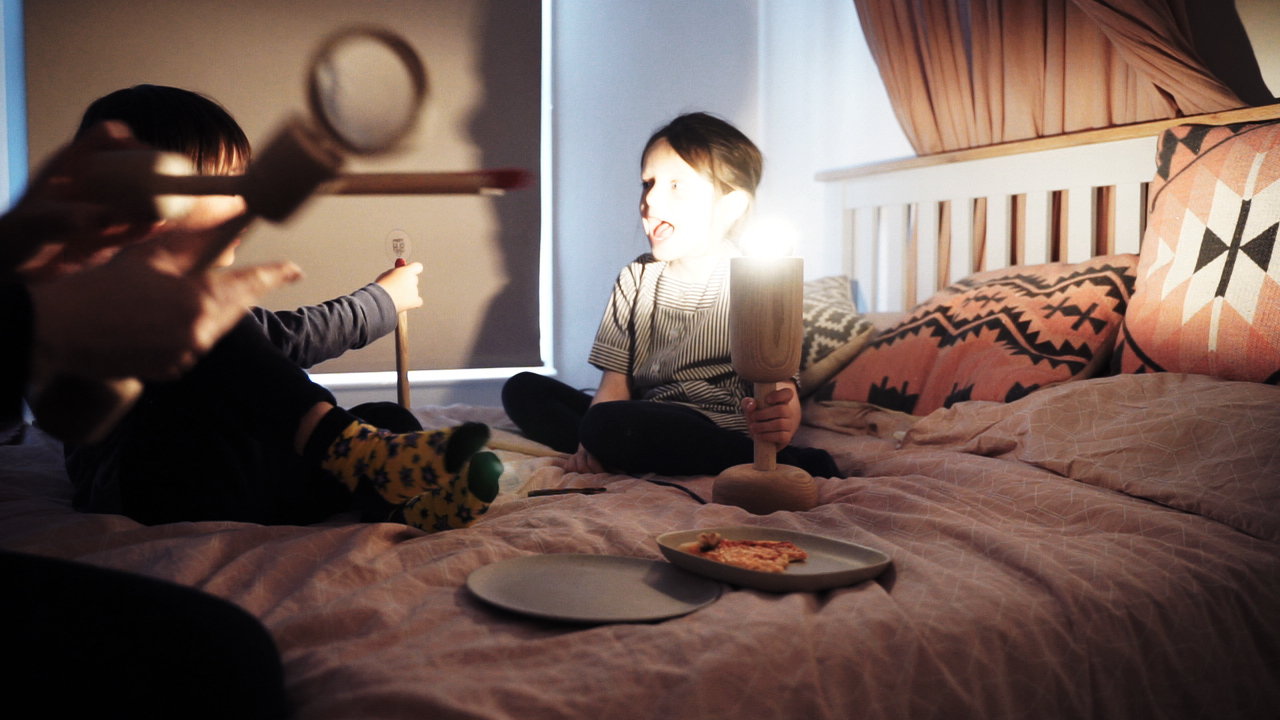OMERO_Experience
Stories shape our everyday life. The way stories are told can influence the life of entire communities. Politics, History, Mathematics are made out of stories. Money, religions, nations, war and peace are the results of well shaped, accepted stories.
Omero is a tool to help you learn the power of narration. Omero, the great storyteller of the Odyssey was blind; the ancients believed that blindness had a sacred connotation, and helped the storyteller to better focus and give substance to the story.
This object, as its human version, allows people to focus on the stories. The atmosphere created in the room by the projections on the walls points the focus on the narration and not on the narrator. A 360° view of the story helps to feel surrounded and immersed in it. The narrator is not the one to look at, but the one to listen to. While the narration goes, social barriers, personal defences or cultural prejudices gradually crumble, the story is the embodiment of the narrator’s socio-cultural identity, that experience becomes a vessel that allows the listeners to create a human connection with the person that is speaking.
This project wants to demonstrate how powerful the experience of a story can be in the economy of human relationships.
All the components of Omero are grouped in a single monolithic object. The design is essential, transparent, it’s appearance is fragile like the magic equilibrium of the imaginative atmosphere generated through the projections.
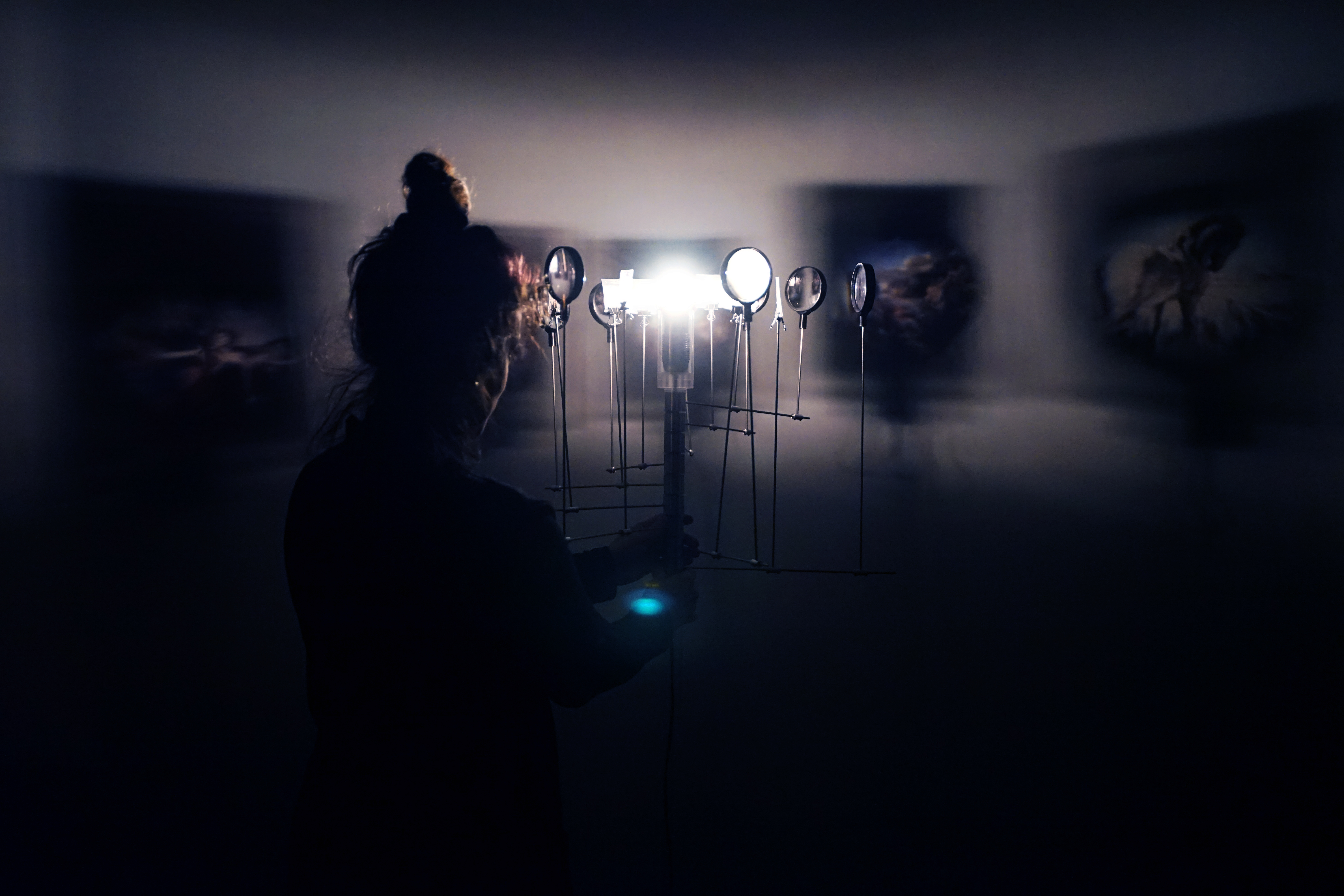
These pictures were taken during a workshop session. People, gathered in a circle, were asked to tell stories, true or of fantasy, in their native languages: Mandarine, Portuguese, Italian, Arabic, Hebrew, Spanish, Thai, Turkish, Dutch. All the participants had to guess, through the symbols and drawings projected on the walls, the content of the story. Most of the time the audience was able to grasp the general meaning of the narration, some details were lost in translation, but the most interesting thing to observe was the feeling of intimacy that grew among the participants through the duration of the workshop. People were visibly more friendly and relaxed among each other compared to the moments previous to the experience.
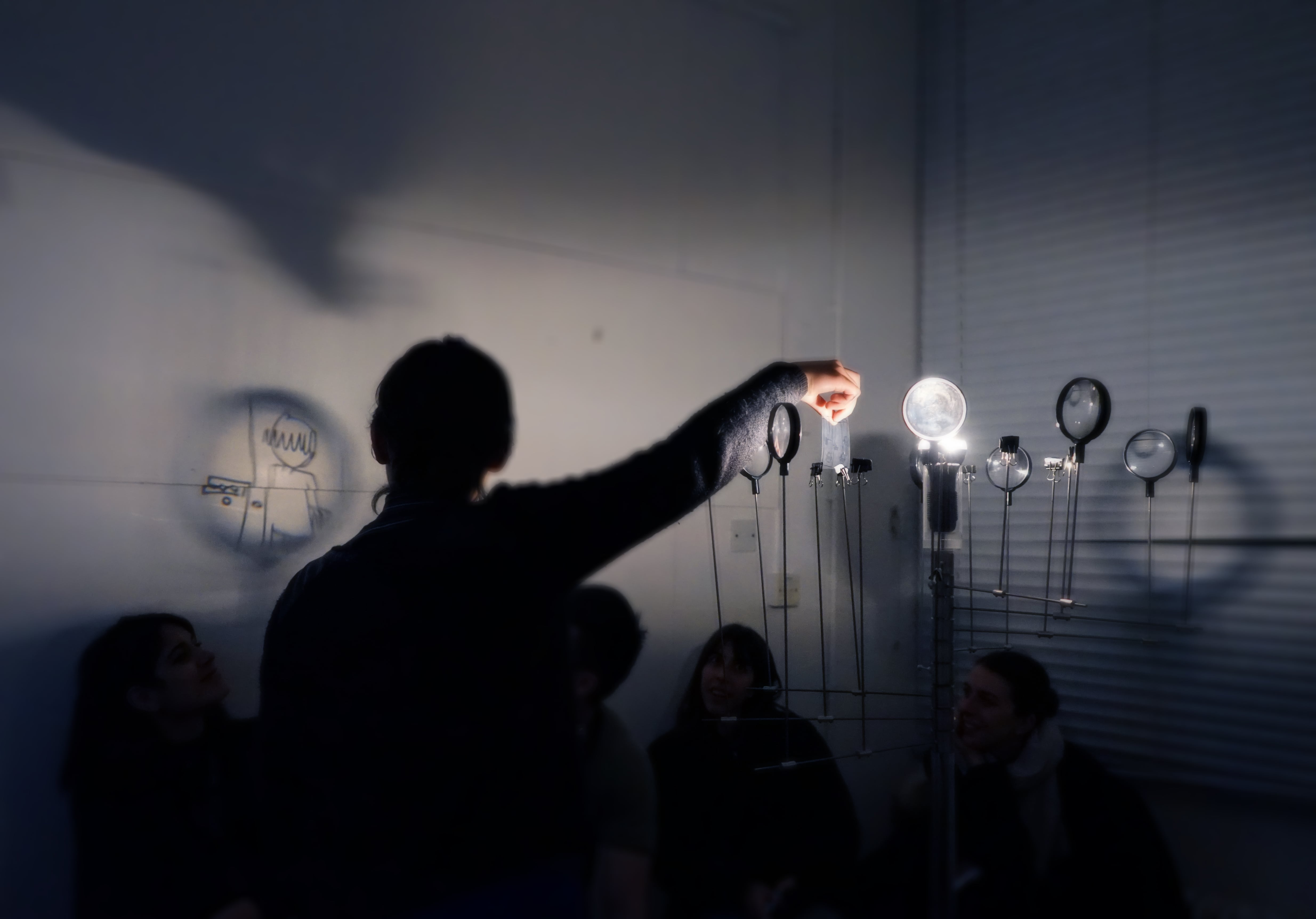


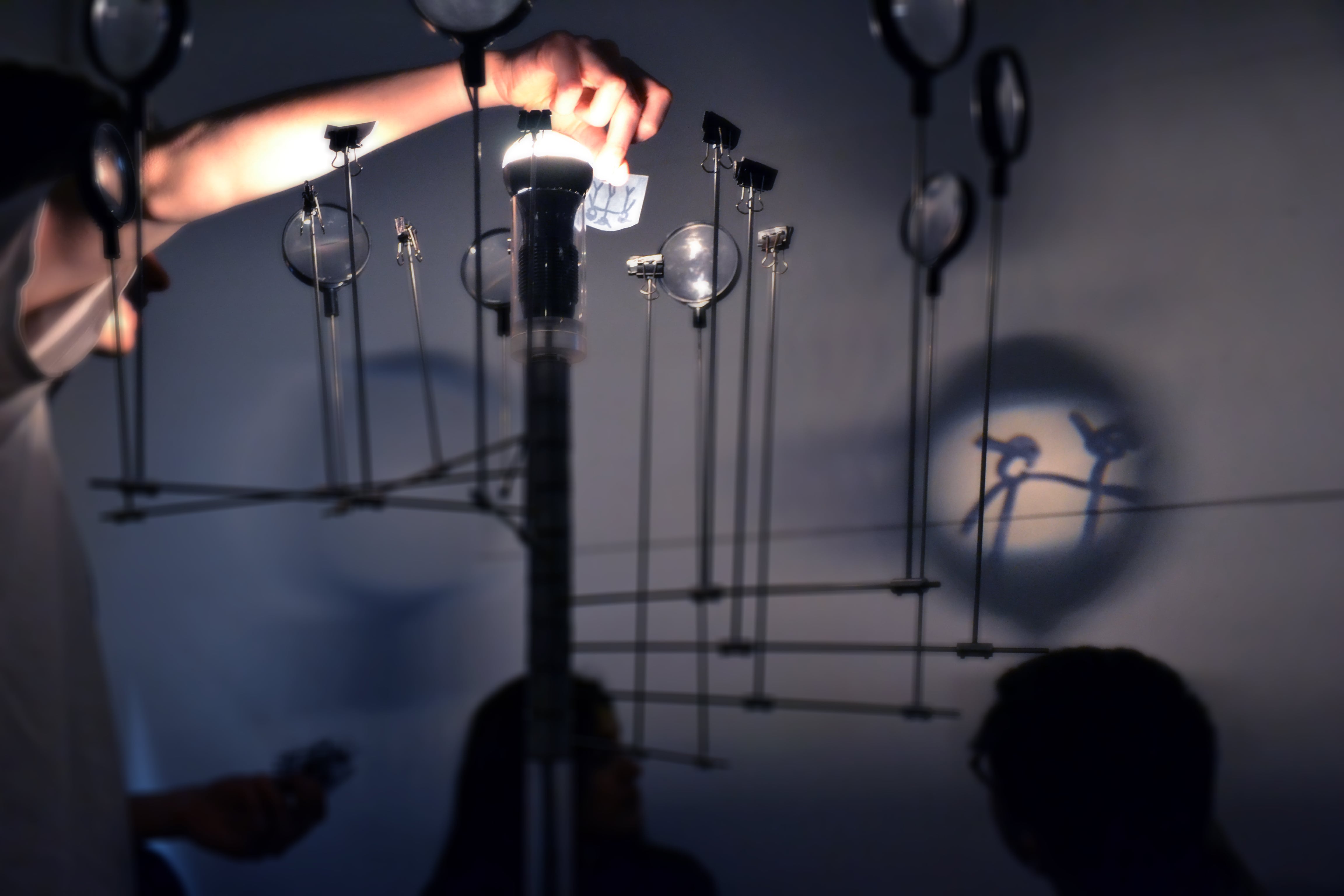
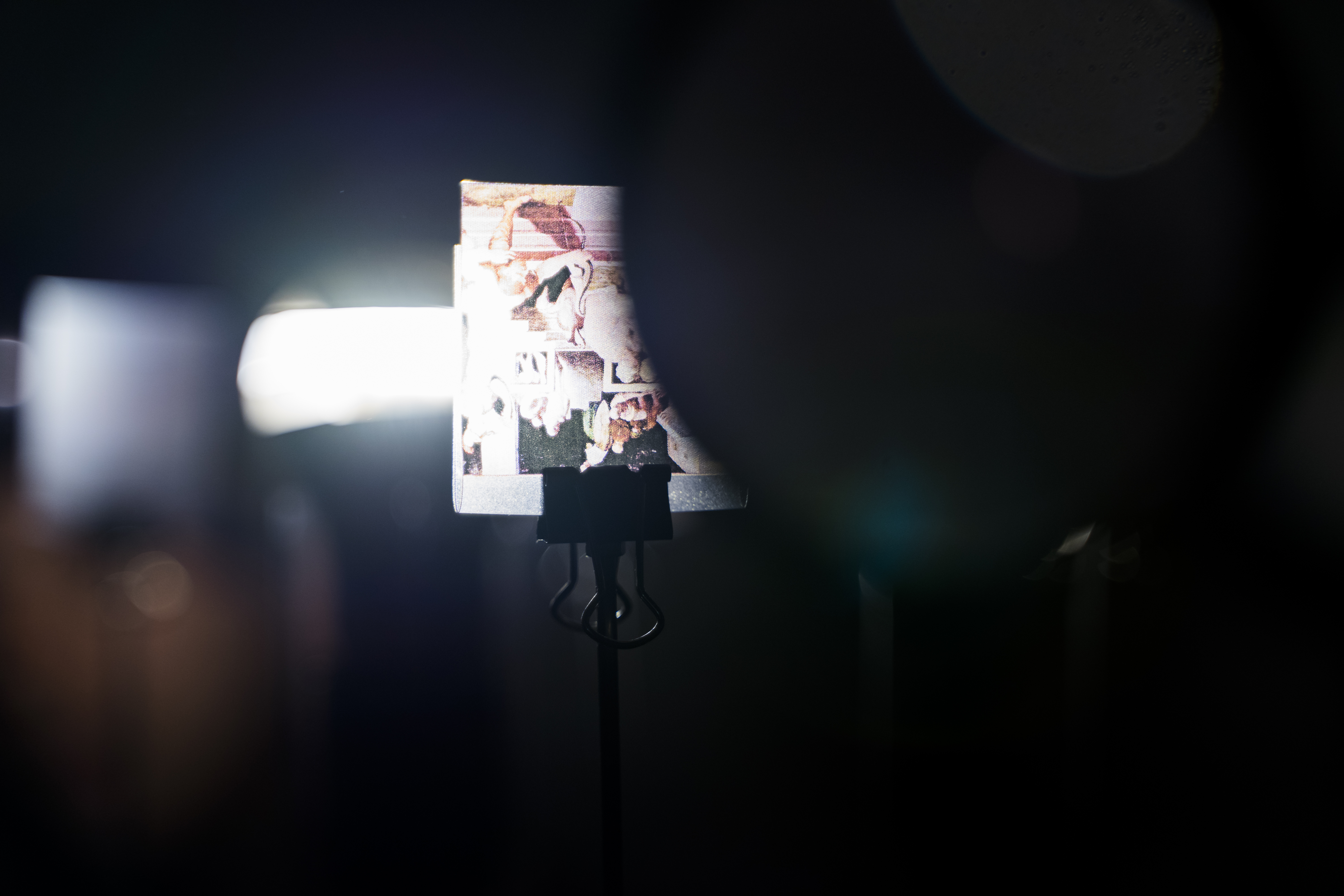
The design of OMERO_ Experience revolves around the psychological principle of the ‘imaginative transposition’:
One’s ability to project the emotional and psychological self in the events of a story and the experiences of its characters. This practice is used in psychoanalysis as an exercise to indirectly metabolise a trauma: the patient resolves their issues through facing the heroes’ challenges.
Similarly, the proposed objects, uses a visual language to speed up the process of emotional and psychological growth.
Similarly, the proposed objects, uses a visual language to speed up the process of emotional and psychological growth.


The use of images as communication tools make OMERO particularly effective among young children from 6 to 12 years old, at this age they make sense of reality through symbolisation. A wooden version of OMERO uses physical and intellectual interaction to foster intimacy. It can be used in a private context to promote parent-child closeness or as a tool in workshops for psychological training. With basic and simple stories it can trigger hidden psychological and behavioural inclinations otherwise invisible.It provides a softer tactile experience thanks to the material choice (Ash). The child and the adult can freely move the components of the object - in this case independent elements - to actively manipulate the storytelling and the entire experience. Changing the slides they can creatively divert the course of the story, they can invent, make sense or imagine new logics.
